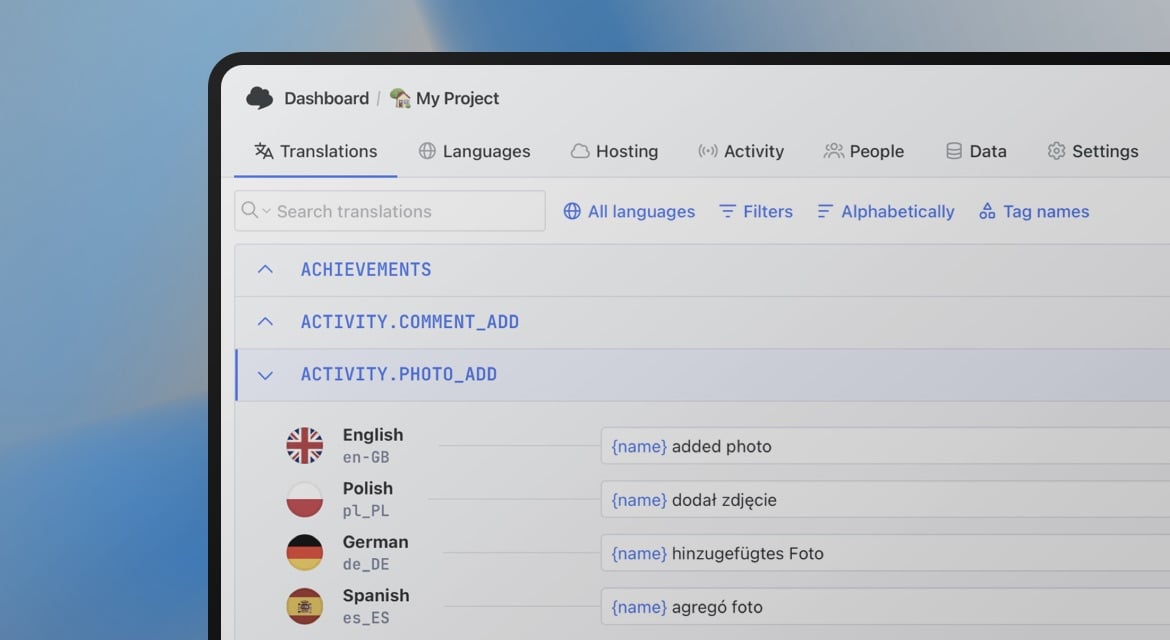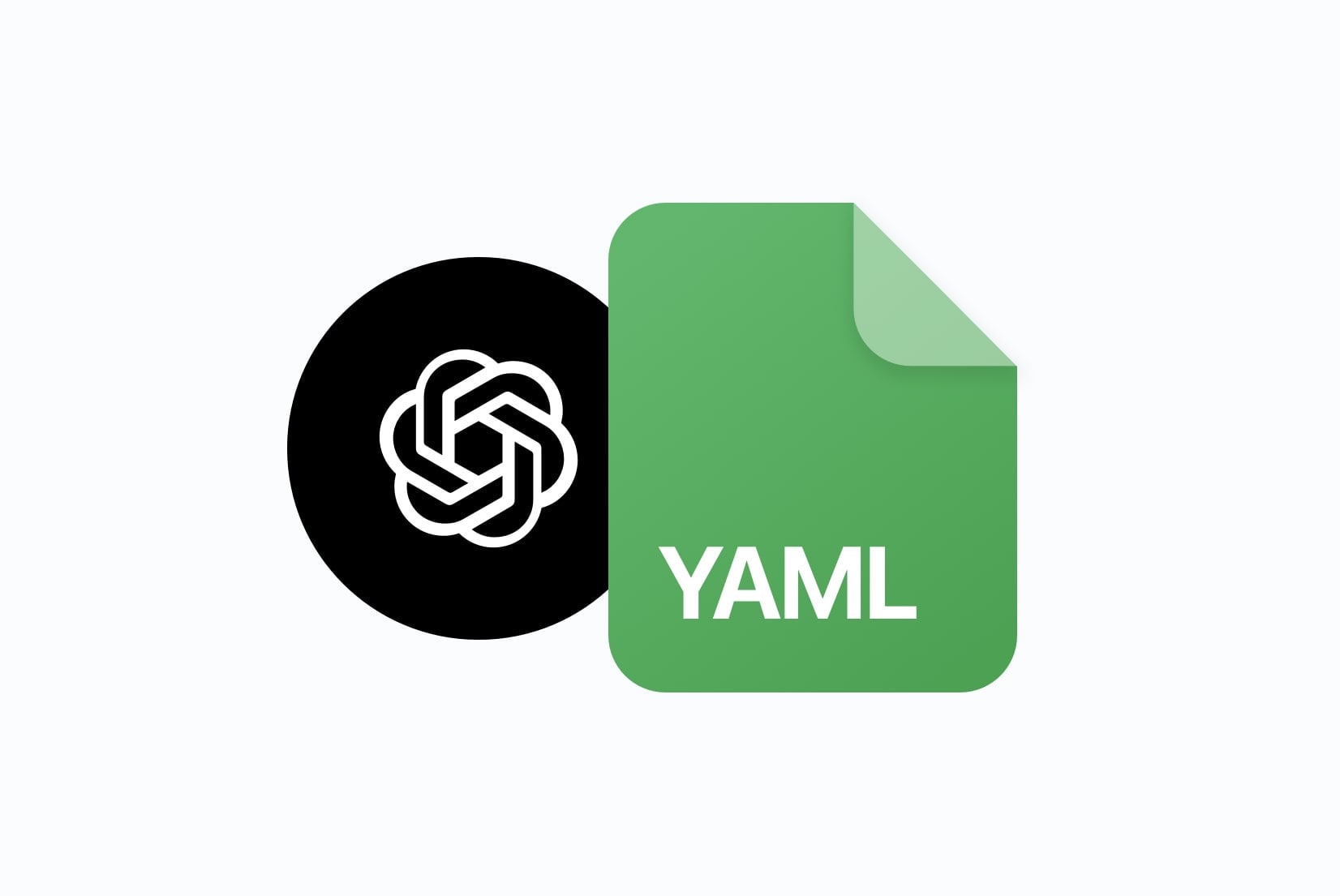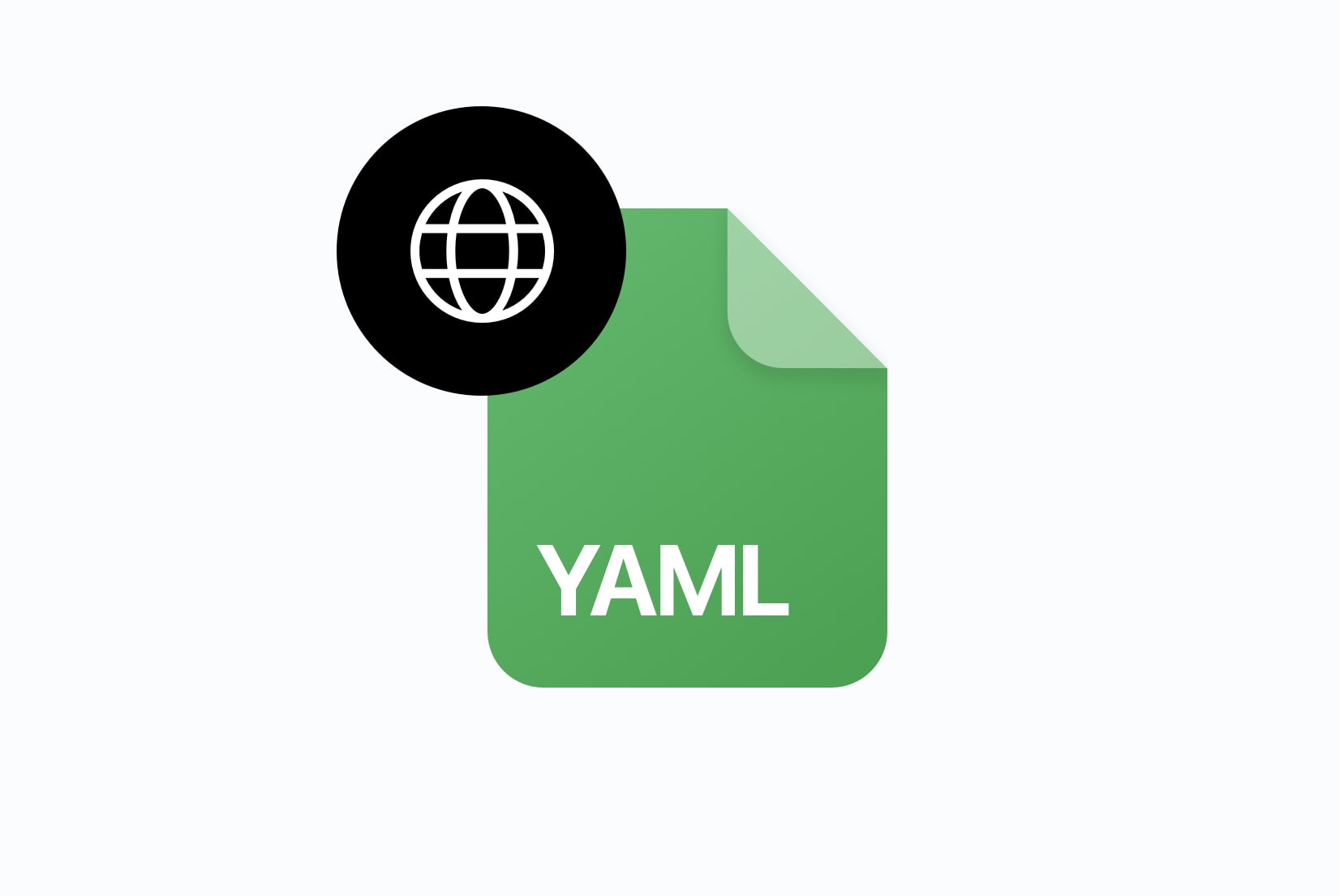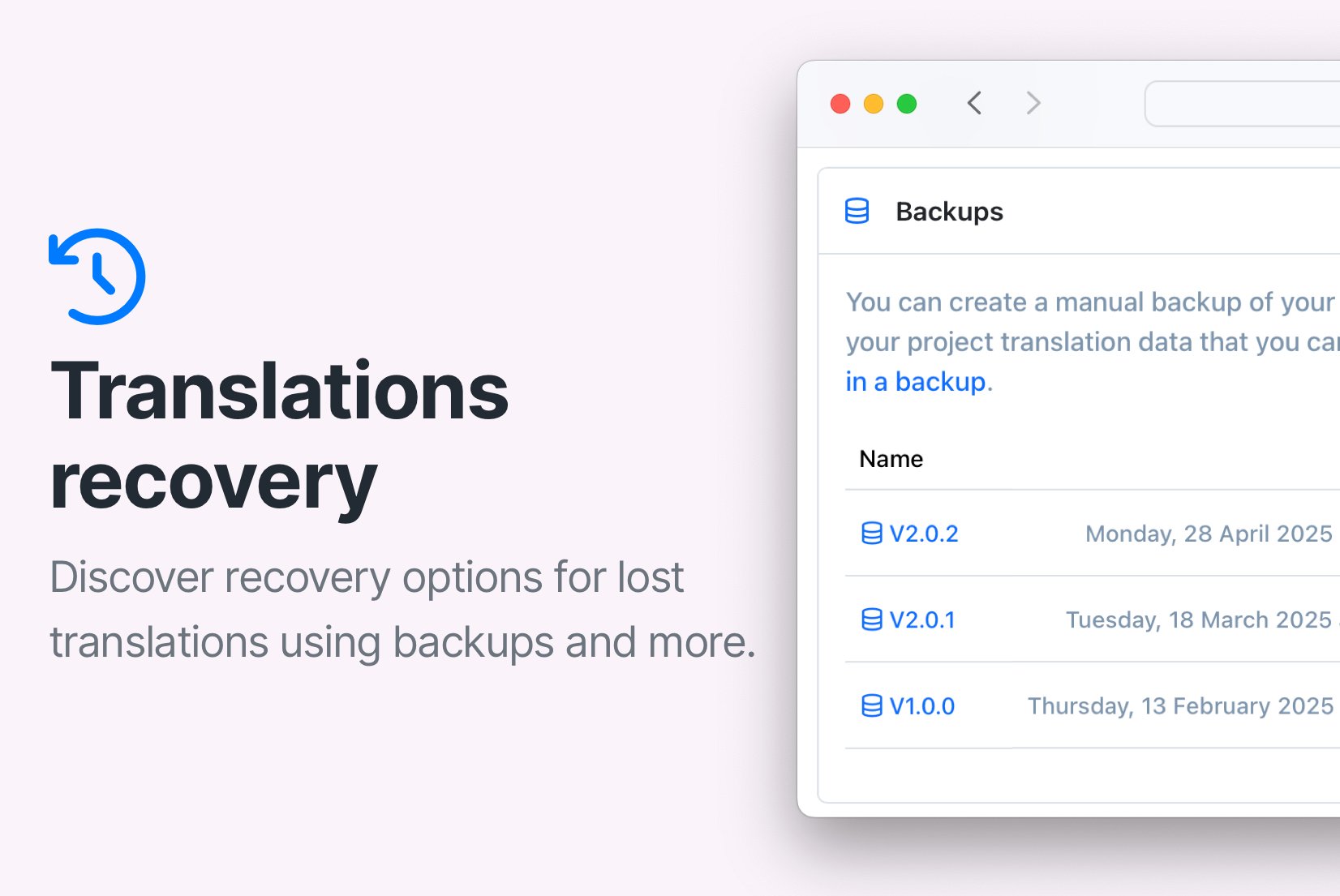YAML vs JSON for translation files: Key differences and best practices
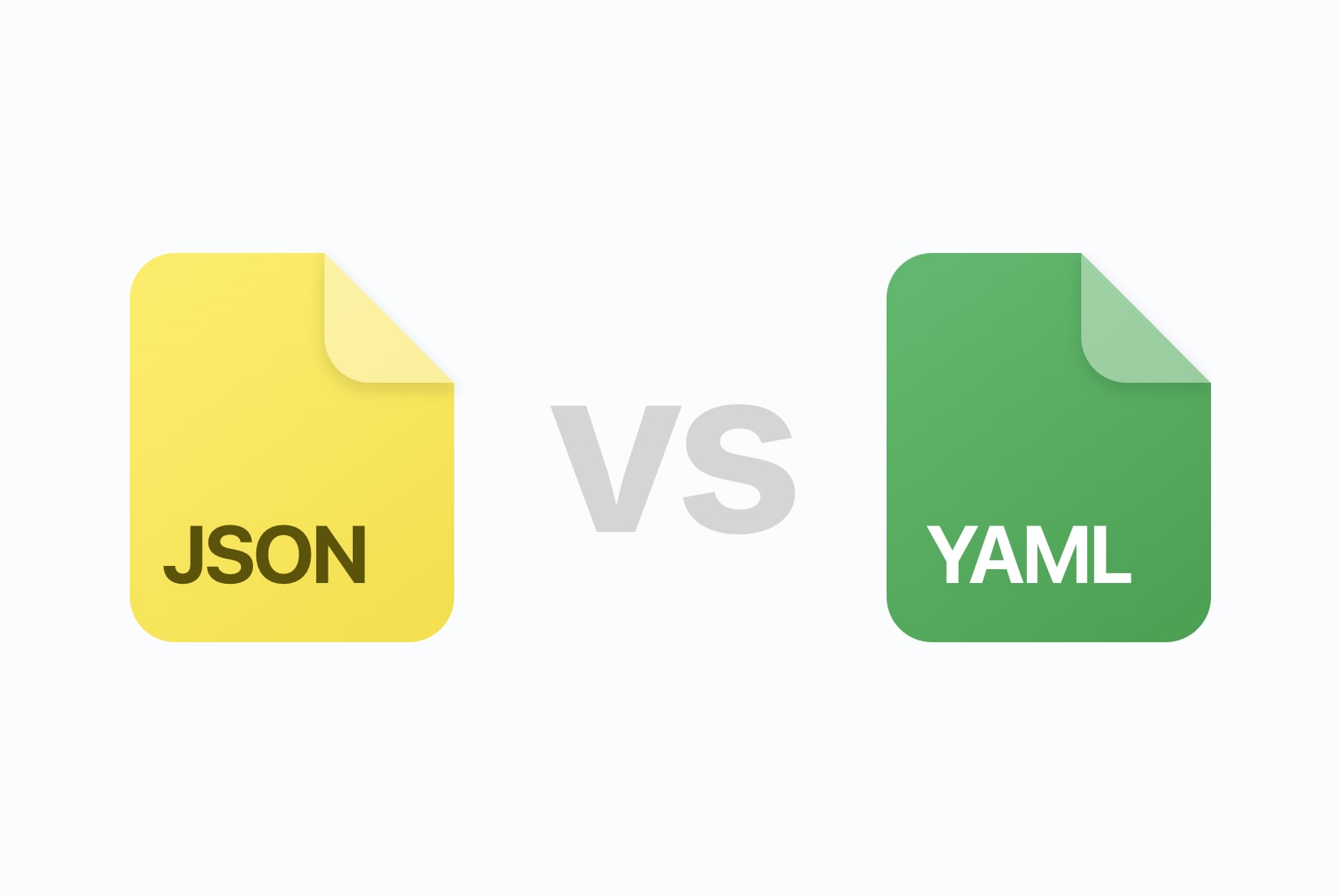
Localization teams spend a lot of time reading and editing translation files. The file format you choose, YAML or JSON, affects readability, tooling, and how smoothly translators, developers, and CI/CD pipelines collaborate.
In this guide, we will break down the key differences, pros and cons, and best practices for using YAML vs JSON in translation files. By the end, you will know which format best fits your project.
- Choose YAML if people edit files, you need comments, multi-line strings, or cleaner diffs.
- Choose JSON for strict structure, fast parsing, and broad tooling, ideal for front-end apps.
- SimpleLocalize supports both, so you can import/export whichever your team prefers.
YAML vs JSON: Key differences
Both YAML and JSON are popular structured data formats, but their design priorities are very different. Here's a quick comparison:
| Feature | YAML | JSON |
|---|---|---|
| Extension | .yaml or .yml | .json |
| Syntax | Indentation-based, flexible | Bracket-based, strict |
| Readability | More human-friendly, supports comments | Can get noisy with quotes/braces |
| Comments | ✅ Yes (# some explanation) | ❌ No comments allowed |
| Trailing commas | ✅ Allowed | ❌ Not allowed |
| Multi-line strings | ✅ Yes (e.g., with >) | Escape newlines with \n |
| Anchors & aliases | ✅ Yes (e.g., &anchor and *alias) | ❌ Not supported |
| Parsing libraries | Slower parsers, larger | Fast parsers, smaller |
| Schema validation | Limited | JSON Schema ecosystem |
File format overview
JSON file
JSON (JavaScript Object Notation) is a lightweight data format. It's machine-friendly, language-agnostic, and widely supported.

Example JSON file:
{
"greeting": "Hello, world!",
"home": {
"signup": "Signup",
"login": "Login",
"logout": "Logout"
}
}
Pros of JSON:
- Strict syntax helps catch errors early.
- Parsers are fast and lightweight.
- Supported by nearly every language, library, and framework.
Cons of JSON:
- Cluttered with braces and quotes in large files.
- No inline comments allowed.
- Multi-line strings require escaping.
YAML file
YAML (YAML Ain't Markup Language) is more human-centric, designed for configuration and readability.

Example YAML file:
greeting: "Hello, world!"
home:
signup: "Signup" # Button text for signing up
login: "Login"
logout: "Logout"
Pros of YAML:
- Supports inline comments.
- Supports inline comments.
- Handles multi-line strings elegantly (
|and>). - Allows anchors & aliases to reduce repetition.
Cons of YAML:
- Parsers are slower and heavier.
- Indentation errors can easily break files.
- Weak schema validation compared to JSON.
YAML and JSON in localization
When choosing a format for translation files, consider how translators and developers will interact with them.
Translator context and comments
Translators often need hints. YAML supports comments directly in the file:
welcome_message: "Welcome to our app!" # Homepage message
JSON doesn't support comments, so context must live in your TMS like SimpleLocalize, documentation, or metadata files.
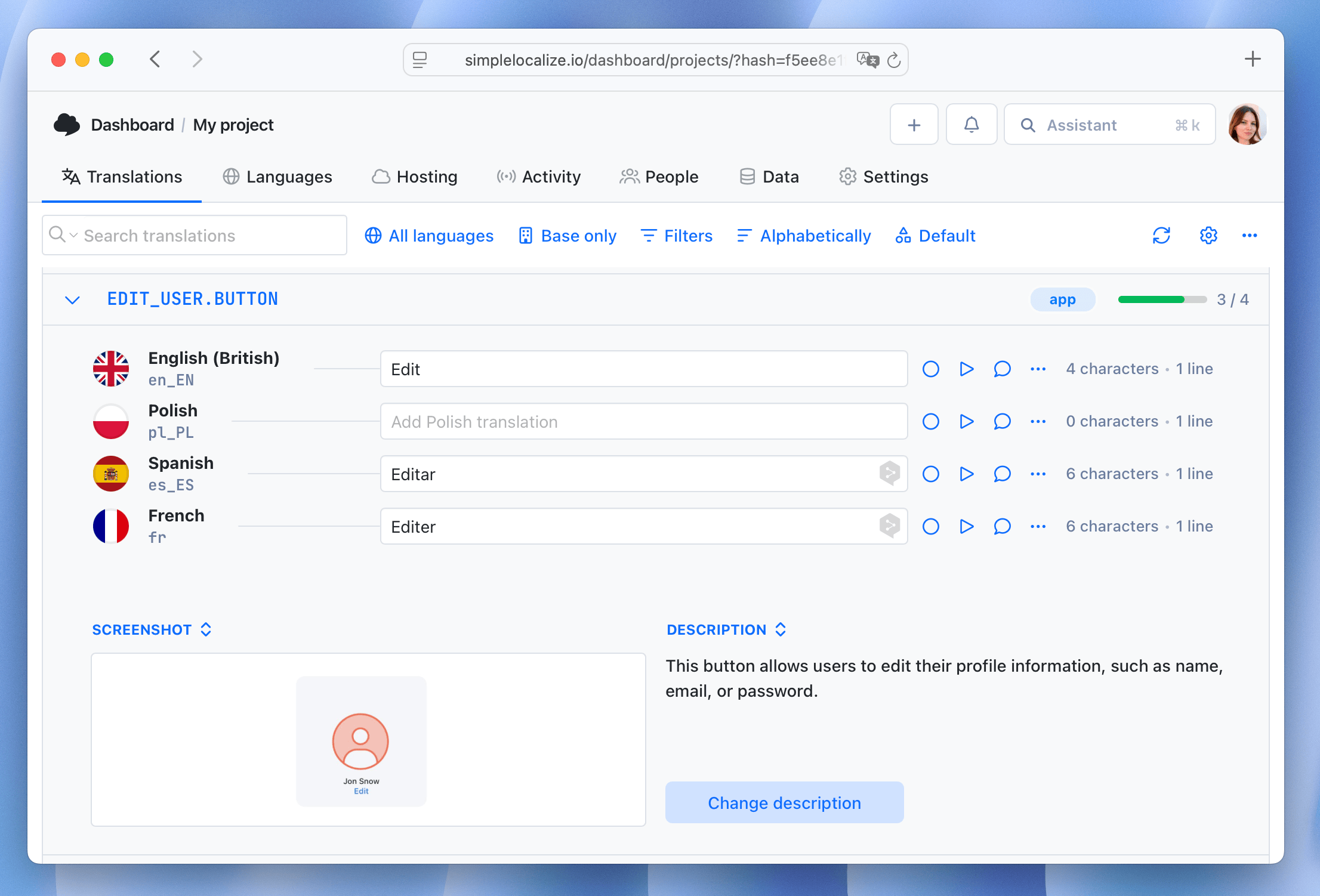
Multi-line strings (emails, legal, etc.)
YAML's block style (> or |) makes it easy to write multi-line strings:
email_body: |
Hello {{name}},
Thanks for joining us!
— The Team
>breaks lines but keeps them in one string, while|preserves line breaks.
JSON requires escaping newlines:
{
"email_body": "Hello {{name}},\n\nThanks for joining us!\n— The Team"
}
Reuse with anchors (YAML only)
YAML's anchors (&) let you define a piece of content once and give it a label. Aliases (*) let you reference that label elsewhere in the file.
common: &ok "OK"
dialog:
confirm: *ok
close: *ok
This is a great DRY (Don't Repeat Yourself) feature, but not all tools preserve anchors, so check your TMS before relying on them.
ICU Message Format, placeholders and plurals
Both YAML and JSON can handle ICU message format, which is great for complex translations with placeholders and plurals. However, YAML's readability shines here:
welcome_message: "Welcome, {{name}}! You have {count, plural, one {
one new message
} other {
{count} new messages
}}."
In JSON, it looks more cluttered:
{
"welcome_message": "Welcome, {{name}}! You have {count, plural, one {one new message} other {{count} new messages}}."
}
What matters here is your i18n library's support for ICU messages, not the file format, e.g., FormatJS, i18next, messageformat, zero-intl. The format won't change ICU behavior; it just carries the string. Both YAML and JSON can handle it just fine.
Ordering and diffs
Neither JSON nor YAML guarantee order by default, but many tools keep insertion order. YAML's lighter syntax tends to produce cleaner diffs, which helps reviews. JSON's strictness reduces accidental structure changes.
Use
Update orderimport option in SimpleLocalize to keep the order you set in your translation files in the translation editor.
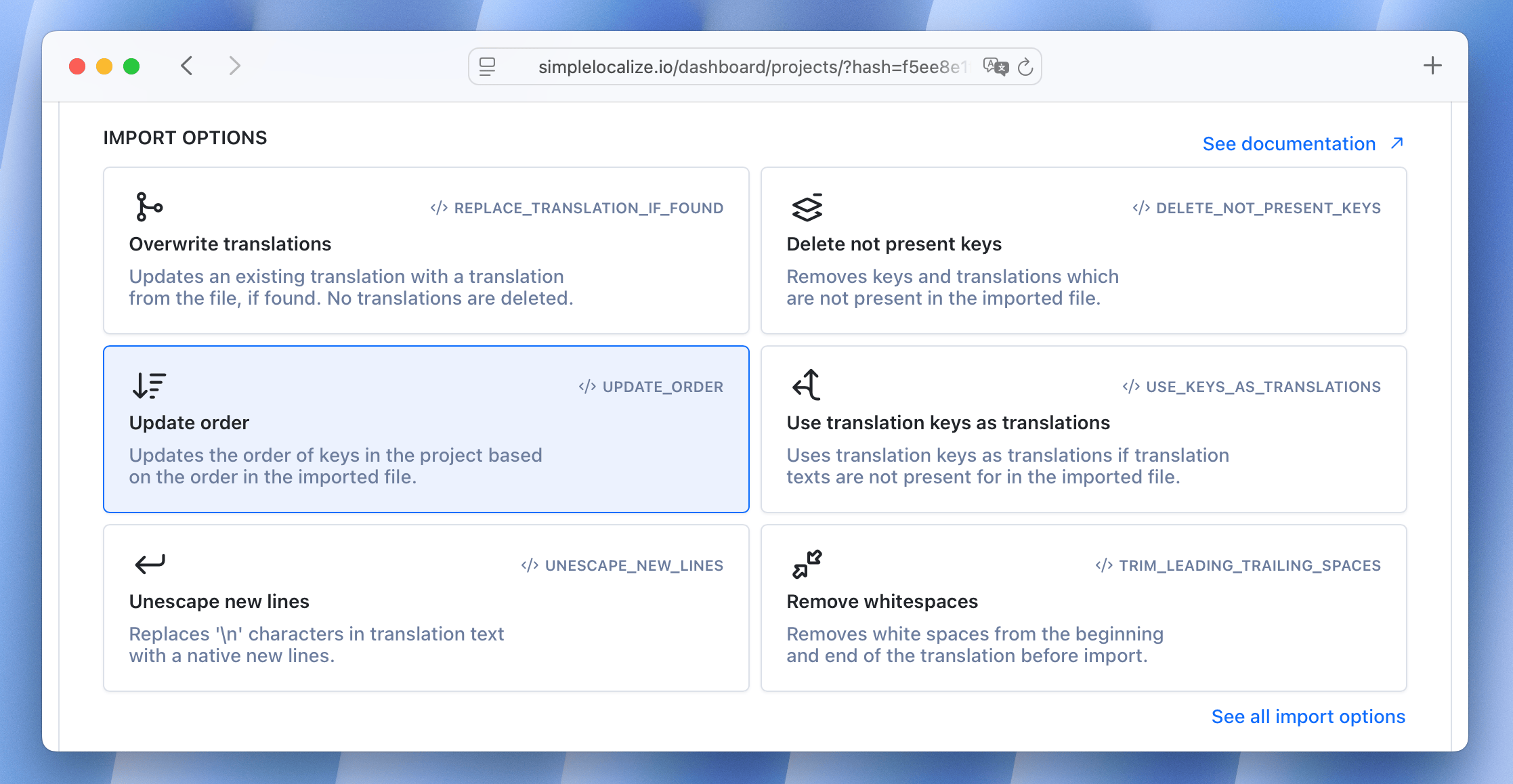
Nested structures
Both formats can handle nested structures, but YAML's indentation makes it more visually clear. JSON uses brackets and commas, which can get messy in large files. For example, a nested structure in YAML:
home:
signup: "Signup"
login: "Login"
logout: "Logout"
In JSON, it looks like this:
{
"home": {
"signup": "Signup",
"login": "Login",
"logout": "Logout"
}
}
Encoding and emoji
Both work fine with UTF-8. YAML can include emojis directly, while JSON can use \uXXXX escapes if needed.
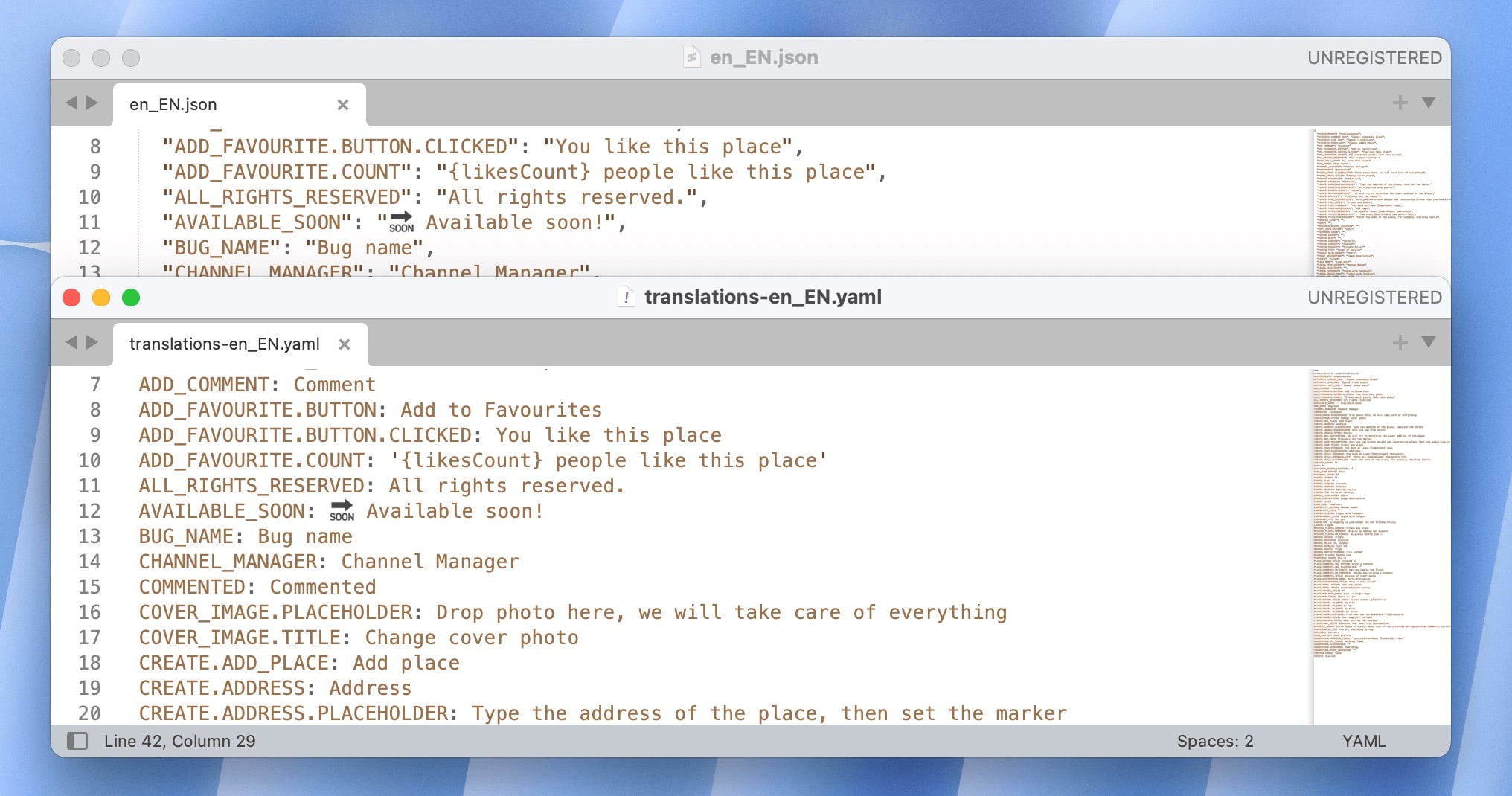
Security and parsing
Both formats can be secure if you use trusted libraries.
- JSON: safer by default, thanks to strict syntax
- YAML: flexible, but some older parsers had vulnerabilities (avoid !! tags unless needed).
Best practices for YAML and JSON in translation files
Here are some best practices to follow when using YAML or JSON for translation files:
- One locale per file, or small per-namespace files (e.g.,
en.json,fr.json,home.yaml,auth.yaml). This keeps files manageable and avoids conflicts. - Use clear keys: Use descriptive keys that make it easy to understand the context of each string. Avoid abbreviations or cryptic names.
- Document placeholders: Describe variables like
{{name}}or%{count}. - Don't overnest: Don't nest too deeply and keep structures simple.
- Keep context near strings: YAML comments or TMS descriptions.
- Automate validation: Check missing/extra keys across locales using tools or scripts.
With SimpleLocalize, you can:
- Import/export both YAML and JSON.
- Preserve order during import with
Update orderoption. - Add descriptions for translators.
- Assign tags or namespaces for better organization.
- Automate updates with CLI or API.
Decision time: YAML or JSON?
Choose the format that fits your workflow. For machine-only processing, JSON offers speed and strict validation. For files frequently edited by people, YAML's readability and support for comments make collaboration easier.
Choose YAML if:
- Translators or non-developers edit files directly.
- You need comments, multi-line strings, or anchors.
- You want cleaner diffs for easier reviews.
Choose JSON if:
- The runtime (web/mobile) consumes translations directly.
- You want speed, strict validation, and compact size.
- Your team already uses JSON across the stack.
Best of both worlds: let translators use YAML in your TMS, then export JSON for runtime. Tools like SimpleLocalize make switching formats easy, so you can adapt as your project evolves.
Conclusion
Both YAML and JSON are excellent for translations, but they serve different audiences:
- YAML = human-friendly editing, context, and readability.
- JSON = machine efficiency, strictness, and performance.
With SimpleLocalize supporting both, you don't need to lock into one format, pick whichever best fits your workflow.
FAQ
Is YAML better than JSON for translations?
YAML is better if translators edit translation files, since it supports comments and multi-line strings. JSON is better for performance, strict validation, and front-end apps.
Can JSON files include comments?
No, JSON does not support comments. Use a translation management system (TMS) like SimpleLocalize to add descriptions or context.
Which is faster: YAML or JSON?
JSON is faster and more lightweight to parse. YAML is slower due to its flexible, indentation-based syntax.
Can both YAML and JSON handle multi-line strings?
Yes. YAML supports multi-line strings with | or >. JSON requires escaping newlines with \n.
Can I use both YAML and JSON in the same project?
Yes. Many teams use YAML for translators and export JSON for runtime. Tools like SimpleLocalize support both formats.
